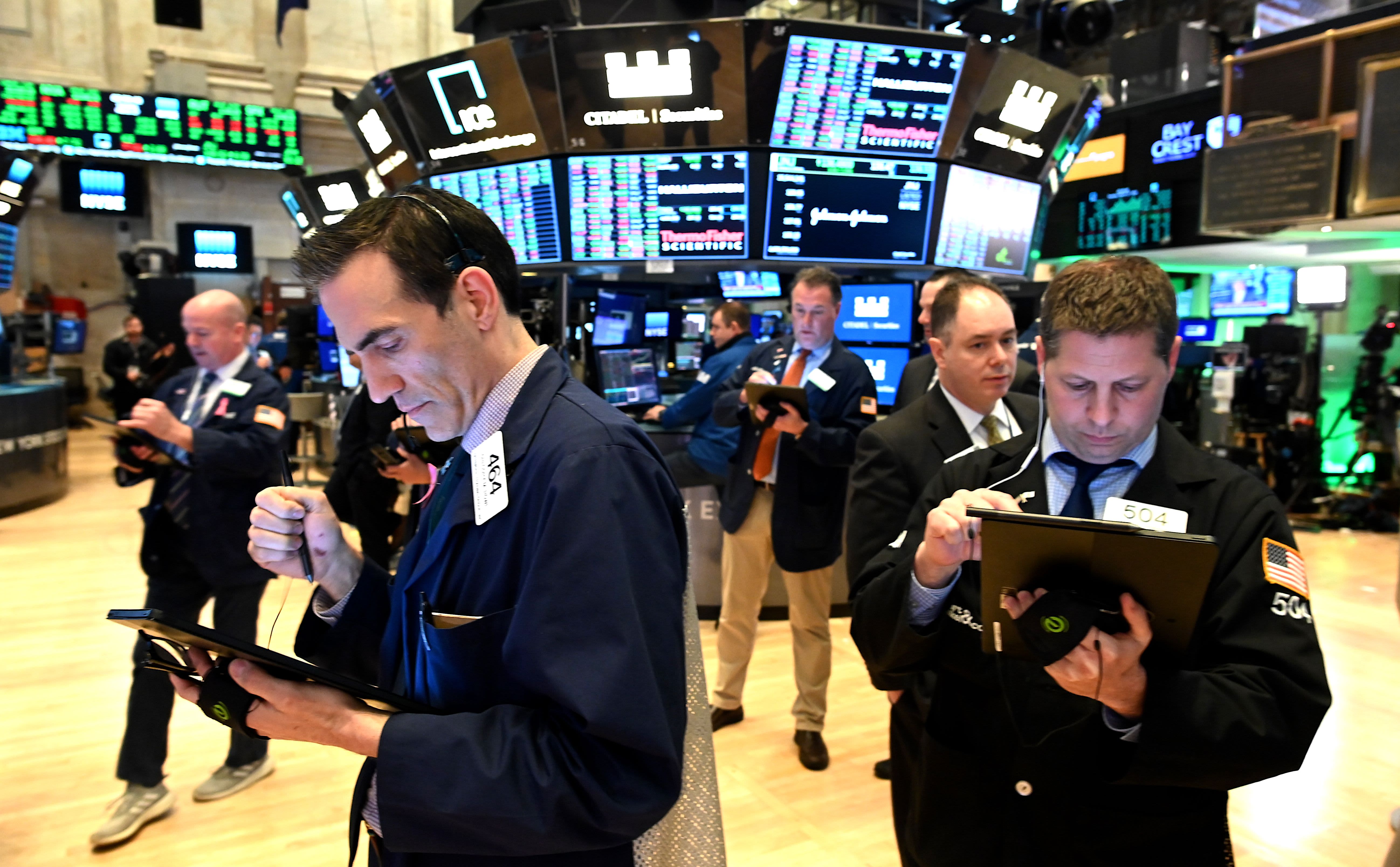
Stock futures were lower on Thursday after weak economic data, set to add losses to what has been tough month on Wall Street.
Dow Jones Industrial Average futures dropped 200 points, or 0.7%. S&P 500 futures slid 0.9% and Nasdaq 100 futures were down by 1.4%.
Futures extended declines after U.S. weekly jobless claims came in worse than expected. First-time claims for state unemployment benefits totaled 870,000 last week, higher than a Dow Jones estimate of 850,000.
Facebook shares traded 1% lower and Amazon fell 0.9%. Apple dipped 1.4% and Netflix pulled back by 0.5%. Alphabet declined 0.7% and Microsoft lost 0.6%.
“Claims, arguable the most important high frequency data point currently, missed expectations and moved up week-over-week,” Evercore ISI strategist Dennis DeBusschere, said in a note Thursday. “With the Fed diminishing its own credibility by continually emphasizing the ineffectiveness of monetary policy and begging for fiscal support, weaker data will have a big impact on risk assets. Especially if the fiscal cliff starts to bite, which some indicators suggests might be starting.”
Meanwhile, comments from President Donald Trump that he would not commit to a peaceful transfer of power should he lose the election appeared to hit sentiment. Investors are concerned about a drawn-out election result.
Stocks continued their September swoon during regular trading hours on Wednesday, with all of the major averages registering steep losses. The Dow Jones Industrial Average closed 525.05 points, or 1.9%, lower, reversing a 176-point gain from earlier in the session. The S&P 500 declined 2.4%, while the Nasdaq Composite shed 3%.
“There wasn’t one specific reason to explain the selling, and in many ways the slump was a continuation of price action that’s been underway since the start of the month,” said Adam Crisafulli of Vital Knowledge. He noted that the tech trade, which cracked earlier in September, has yet to recover. “Psychology around the group shifted and it’s no longer the stalwart source of support it once was. Meanwhile, investors still aren’t comfortable enough with the cyclical/value stocks to even begin to offset the ongoing tech weakness,” he added.
So far in September the S&P 500 has declined 7.5%, while the Dow has shed 5.8%. The Nasdaq Composite has been the relative outperformer, registering a loss of 9.7% as investors rotate out of Big Tech. Facebook, Amazon, Apple, Netflix, Alphabet and Microsoft are all down at least 11% in September.
Those sharp September losses come amid uncertainty on further U.S. fiscal stimulus as lawmakers struggle to move forward with a new package.
This lack of stimulus bill led Goldman Sachs to slash its fourth-quarter GDP forecast to 3% from 6% on an annualized basis.
“We think it is now clear that Congress will not attach additional fiscal stimulus to the continuing resolution,” Jan Hatzius, chief economist at Goldman Sachs, wrote in a note. “This implies that after a final round of extra unemployment benefits that is currently being disbursed, any further fiscal support will likely have to wait until 2021.”
Looking ahead to Thursday, Federal Reserve Chair Jerome Powell and Secretary of the Treasury Steven Mnuchin will appear before the Senate banking committee.
The testimony comes as Washington struggles to move forward with additional stimulus measures. On Wednesday Chair Powell reiterated that further fiscal stimulus is needed if the U.S. economic recovery is to continue.
“Today’s [Wednesday’s] stock market action is a clear signal that investors are demanding further stimulus, either fiscal or monetary,” said Andrew Smith, chief investment strategist at Delos Capital Advisors. “While most investors are pinning the recent bout of volatility on seasonality and political uncertainty, we have entered a period where a liquidity pocket is present, which has caused the US Dollar to rally, thus hurting risk assets.”
— CNBC’s Yun Li contributed reporting
Subscribe to CNBC PRO for exclusive insights and analysis, and live business day programming from around the world.




